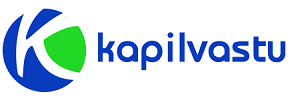In the standard pultrusion process the reinforcement materials like fibers or woven or braided strands are impregnated with resin, possibly followed by a separate preforming system, and pulled through a heated stationary die where the resin undergoes polymerization. The impregnation is either done by pulling the reinforcement through a bath or by injecting the resin into an injection chamber which typically is connected to the die. Many resin types may be used in pultrusion including polyester, polyurethane, vinylester and epoxy. Resin provides the resistance to the environment, (i.e., the corrosion resistance, the UV resistance, the impact resistance, etc.) and the glass provides strength, in addition to safety from fire.
Advantages of Pultrusion
- Improved structural properties of laminates
- Volatile emissions are limited by enclosing the resin impregnation area
- High glass content is achievable
Disadvantages of Pultrusion
- It is difficult to pultrude a profile with complex cross section
- High initial investments.
- Only the uniform cross section profiles are feasible.
Products manufactured under this technology are widely used in the following industries:
- In the agriculture and chemical industries for manufacturing of chemically resistant to aggressive media slatted floors with enhanced strength characteristics used in the construction of livestock facilities, chemical plants, etc.;
- in the construction industry for the production of glass-fiber reinforcement, profiles, carcasses, stiffening bars for PVC-windows, etc.;
- in the aerospace industry for manufacturing of structure components of aircraft;
- in the sports and tourism industries for manufacturing of equipment exhibiting enhanced strength properties: skis, ski poles, golf course flagsticks, tent and hovel constructions, etc.;
- in electrical power engineering for manufacturing of dielectric structures, fiberglass rods used in composite insulators and as supporting structures for elements of signaling blocks, and fiberglass profiles used in manufacturing of transformers and electric motors;
- in commercial production, using grains of long-fiber molding material (LLM) as a raw material for subsequent manufacturing of structures and products with enhanced strength and chemical properties;
- in the automotive industry for the production of structural and complex parts of the vehicles with enhanced stiffness, rigidity and lightness;
- and in many other industries and plants, using mechanisms, structures and materials, which meet high standards of chemical, dielectric and strength stability.
